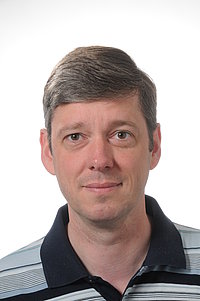Simulation of Solid-State Actinide Materials
Dr. Matthias Krack (Laboratory for Reactor Physics and Systems Behaviour, Paul Scherrer Institute, Switzerland)
Reliable simulations of actinide materials are important as a complementary alternative to experimental investigations, because experiments with such usually hazardous materials are difficult and costly. During the recent decades density functional theory (DFT) has proven to be such a method for condensed phase actinide systems. The accurate description of the strong correlation of the 5f electrons, however, still poses a challenge. Standard DFT functionals are usually augmented with a Hubbard-type U term (DFT+U) or with a contribution of exact exchange (hybrid functionals) nowadays to improve the description of the strongly correlated 5f electrons. Alternatively, force fields methods have been applied for the simulation of actinide materials since more than 40 years. A comprehensive introduction to electronic structure as well as force field methods will be given with a focus on their application to actinide materials in the framework of the CP2K program package.
Dr. Matthias Krack (Laboratory for Reactor Physics and Systems Behaviour, Paul Scherrer Institute, Switzerland) Reliable simulations of actinide materials are important as a complementary alternative to experimental investigations, because experiments with such usually hazardous materials are difficult and costly. During the recent decades density functional theory (DFT) has proven to be such a method for condensed phase actinide systems. The accurate description of the strong correlation of the 5f electrons, however, still poses a challenge. Standard DFT functionals are usually augmented with a Hubbard-type U term (DFT+U) or with a contribution of exact exchange (hybrid functionals) nowadays to improve the description of the strongly correlated 5f electrons. Alternatively, force fields methods have been applied for the simulation of actinide materials since more than 40 years. A comprehensive introduction to electronic structure as well as force field methods will be given with a focus on their application to actinide materials in the framework of the CP2K program package.
| ||
